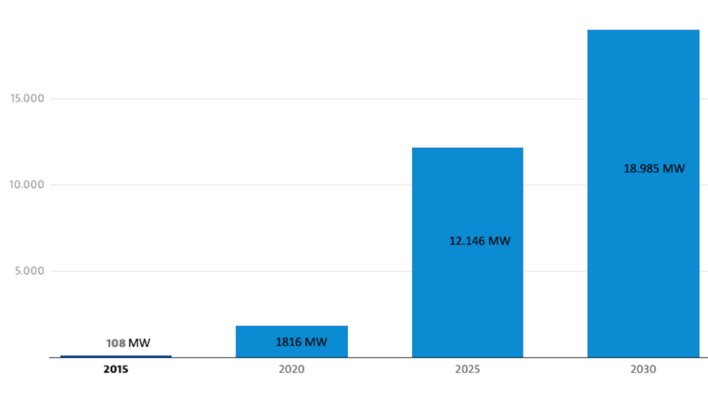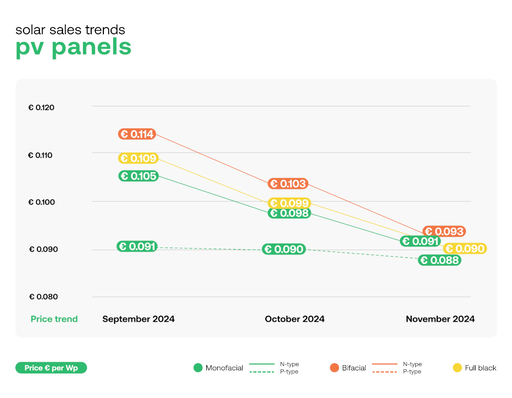Microsoft's climate and sustainability goals are ambitious. By 2030, the tech giant wants to be carbon negative, water positive, produce zero waste, and protect more land than it uses. However, especially when it comes to reducing CO2 emissions, the trend is going in the opposite direction, as Sean Jones, Head of Sustainability at Microsoft Germany, had to admit at the Solar Plus 2024 forum in Berlin.
Instead of the targeted annual reduction in emissions of 6 to 7 percent, they have increased by a total of 29 percent since 2020. According to Jones, this is primarily due to the massive expansion of data centers and the carbon bound up in construction materials and hardware components such as semiconductors, servers and racks. Even more, the emissions reflect the challenges the world must overcome to develop and use concrete, steel, fuels and chips in a more environmentally friendly way.
1 billion $ invested in data centers every day
The global expansion of data centers is driven by the booming applications of artificial intelligence (AI) and cloud services. Microsoft operates around 300 data centers worldwide and invests around 1 billion US dollars in data centers every day. At its core, Microsoft is not just a software provider, but an infrastructure company that builds and operates data centers, according to Jones.
Also see: Less energy is more
To reduce the increased emissions in the so-called Scope 3 area, the technology group is relying, among other things, on demanding that “100 percent CO2-free electricity” be used by “selected, large-volume suppliers” for the goods and services supplied by 2030. In addition, partnerships to accelerate innovation – including the use of AI – for environmentally friendly steel, concrete and fuels, among other things, are to be promoted, according to the Microsoft`s latest sustainability report.
Microsoft includes nuclear power in renewables
At the same time, Microsoft wants to further expand its own use of renewable electricity and investments in renewable energies. “We place a great deal of emphasis on increasing our renewable energy capacity, particularly solar, wind and hydro – and in the US, nuclear,” Jones emphasized.
Also see: Eaton and Microsoft cooperate for grid decarbonization
Because Microsoft now also counts nuclear power as a renewable energy. However, the company does not communicate how high the share of the individual technologies is in its energy and investment mix, be it nuclear power or photovoltaics, Jones admitted.
Share and costs of nuclear power a black box
The company only publishes the total portfolio of renewable energies, which last year was 19.8 gigawatts (GW). The share of nuclear power is a black box. In May of this year, the tech company signed a five-year power purchase agreement (PPA) with Brookfield Renewable Partners for 10.5 gigawatts of new renewable generation capacity, which, according to the company's press release, also includes “new or effective technologies for carbon-free energy generation”.
Also see: Microsoft - European Energy: Solar and wind PPAs including hybrid projects
At the end of September, it was announced that a nuclear reactor at the US power plant Three Mile Island that had been shut down five years ago was to be restarted to supply Microsoft's data centers.
However, Jones did not want to comment on the amount of investment, the costs and the economic viability of investments in nuclear power during the interview. But he did admit that the as-yet unresolved nuclear waste issue stands in contrast to the company's goal of “zero waste”. (hcn)








